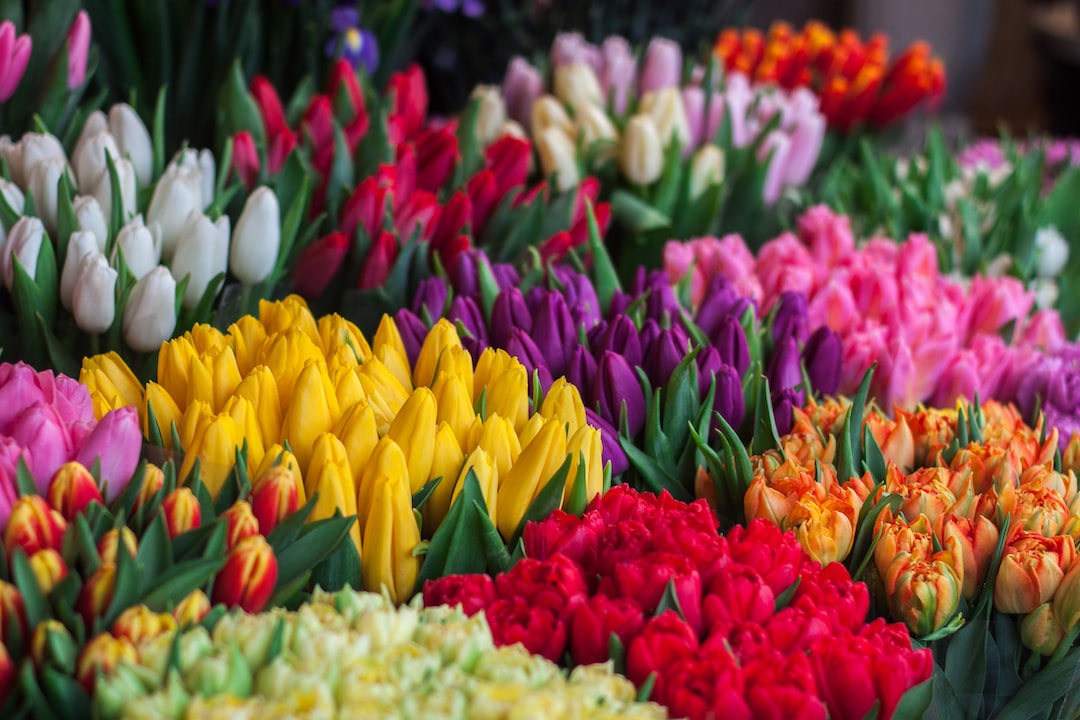From Bulb to Bloom: The Timeline of Tulip Growth – How Long Does it Take for Tulips to Grow?

Tulips are one of the most popular and beloved flowers in the world. Known for their vibrant colors and elegant shape, tulips have captured the hearts of gardeners and flower enthusiasts for centuries. Understanding the growth timeline of tulips is essential for anyone looking to cultivate these beautiful flowers. By knowing the different stages of tulip growth and the factors that affect their development, gardeners can ensure optimal growth and a stunning display of blooms.
Key Takeaways
- Tulips have a fascinating growth timeline that spans several months.
- Understanding the life cycle of tulips is important for optimal growth and care.
- The stages of tulip growth include bulb formation, shoot emergence, leaf and stem development, and bud formation.
- Tulip flowering can take anywhere from a few weeks to a few months, depending on various factors.
- Proper care and attention, including watering, fertilizing, and pruning, can help ensure healthy tulip growth and beautiful blooms.
Understanding the Life Cycle of Tulips
The life cycle of tulips can be divided into several distinct stages, each playing a crucial role in the overall growth process. These stages include bulb formation, shoot emergence, leaf and stem development, bud formation, and finally, flowering. Each stage is important for the successful growth and blooming of tulips.
Stages of Tulip Growth: Bulb to Shoot
The first stage of tulip growth begins with the planting of bulbs. Tulip bulbs should be planted in the fall, before the ground freezes. The bulbs should be placed in well-drained soil, with the pointed end facing upwards. It is important to plant the bulbs at the correct depth, typically about 6-8 inches deep.
During this stage, the bulbs will begin to develop roots and establish themselves in the soil. It is crucial to provide adequate moisture during this time to promote healthy root growth. Once the roots are established, shoots will begin to emerge from the bulbs, signaling the start of the next stage of growth.
The Emergence of Tulip Leaves and Stem
| Stage | Timeframe | Temperature | Light | Water |
|---|---|---|---|---|
| Germination | 7-21 days | 15-20°C | Indirect sunlight | Moist soil |
| Emergence of leaves | 2-3 weeks after germination | 15-20°C | Indirect sunlight | Moist soil |
| Emergence of stem | 3-4 weeks after germination | 15-20°C | Indirect sunlight | Moist soil |
The second stage of tulip growth is marked by the emergence of leaves and stems from the bulbs. As the shoots grow, they will push through the soil and unfurl their leaves. It is important to provide proper watering and sunlight during this stage to ensure healthy leaf and stem development.
Tulips require regular watering, especially during dry periods. However, it is important to avoid overwatering, as this can lead to root rot. Tulips also need at least 6 hours of direct sunlight each day to thrive. If the plants are not receiving enough sunlight, they may become weak and leggy.
The Development of Tulip Buds
The third stage of tulip growth is the development of buds. As the leaves and stems continue to grow, they will eventually produce flower buds. These buds will form at the top of the stem and gradually increase in size.
Proper fertilization is crucial during this stage to ensure healthy bud development. Tulips require a balanced fertilizer that is high in phosphorus, which promotes flower formation. Fertilizer should be applied according to the manufacturer’s instructions, typically in early spring before the buds begin to open.
Tulip Flowering: How Long Does it Take?

The fourth stage of tulip growth is the flowering stage. This is when the buds open up and reveal their beautiful petals. The length of the flowering stage can vary depending on several factors, including the variety of tulip, weather conditions, and care provided.
On average, tulips will bloom for about 1-2 weeks. However, some varieties may have a shorter or longer blooming period. It is important to note that once tulips have finished blooming, their flowers will begin to fade and wilt. At this point, it is best to remove the spent flowers to prevent seed production and conserve energy for bulb development.
Factors that Affect Tulip Growth and Development
Several external factors can affect the growth and development of tulips. These factors include temperature, moisture levels, sunlight exposure, soil quality, and pests or diseases.
Tulips prefer cool temperatures and thrive in climates with cold winters and mild springs. Extreme heat can cause the flowers to wilt prematurely or prevent them from blooming altogether. Similarly, excessive moisture or poor drainage can lead to root rot and other fungal diseases.
Sunlight is essential for tulip growth, as it provides the energy needed for photosynthesis. Lack of sunlight can result in weak and leggy plants. Additionally, tulips require well-drained soil with a pH level between 6 and 7.5. Soil that is too acidic or alkaline can hinder nutrient uptake and overall growth.
Pests and diseases can also pose a threat to tulip growth. Common pests include aphids, slugs, and snails, while diseases such as tulip fire and botrytis can cause significant damage. Regular monitoring and proper pest and disease management are crucial for maintaining healthy tulips.
Caring for Tulips: Tips for Optimal Growth
To ensure optimal growth and blooming, there are several tips to keep in mind when caring for tulips:
1. Plant bulbs correctly: Plant tulip bulbs in the fall, at the correct depth and spacing. This will provide them with the best start for healthy growth.
2. Provide adequate water: Tulips require regular watering, especially during dry periods. However, be careful not to overwater, as this can lead to root rot.
3. Ensure proper sunlight exposure: Tulips need at least 6 hours of direct sunlight each day to thrive. If your garden doesn’t receive enough sunlight, consider planting tulips in containers that can be moved to sunnier spots.
4. Fertilize appropriately: Use a balanced fertilizer high in phosphorus to promote healthy bud development. Apply the fertilizer according to the manufacturer’s instructions.
5. Monitor for pests and diseases: Regularly inspect your tulips for signs of pests or diseases. Take appropriate measures to manage any issues that arise.
6. Remove spent flowers: Once the tulip flowers have faded, remove them to prevent seed production and conserve energy for bulb development.
Harvesting and Storing Tulip Bulbs
After the tulip flowers have finished blooming, the plants will begin to wither and die back. This is the time to harvest the bulbs for storage or replanting. To harvest tulip bulbs, carefully dig them up using a garden fork or shovel. Be careful not to damage the bulbs during this process.
Once the bulbs have been harvested, they should be cleaned and dried thoroughly. Remove any excess soil and allow the bulbs to air dry in a cool, well-ventilated area for a few days. Once dry, store the bulbs in a cool, dark place until they are ready to be replanted in the fall.
Proper storage is crucial for preserving the quality of tulip bulbs. They should be stored in a breathable container, such as a mesh bag or paper bag, to prevent moisture buildup. Avoid storing bulbs in plastic bags or airtight containers, as this can lead to rotting.
The Beauty and Wonder of Tulip Growth
In conclusion, understanding the growth timeline of tulips is essential for anyone looking to cultivate these beautiful flowers. From bulb formation to shoot emergence, leaf and stem development, bud formation, and finally flowering, each stage plays a crucial role in the overall growth process.
By providing proper care and attention throughout each stage, gardeners can ensure optimal growth and a stunning display of blooms. From planting bulbs correctly to providing adequate water, sunlight, and fertilization, every step is important for the successful growth of tulips.
So next time you admire a field of blooming tulips or receive a bouquet of these magnificent flowers, take a moment to appreciate the beauty and wonder of their growth journey.



